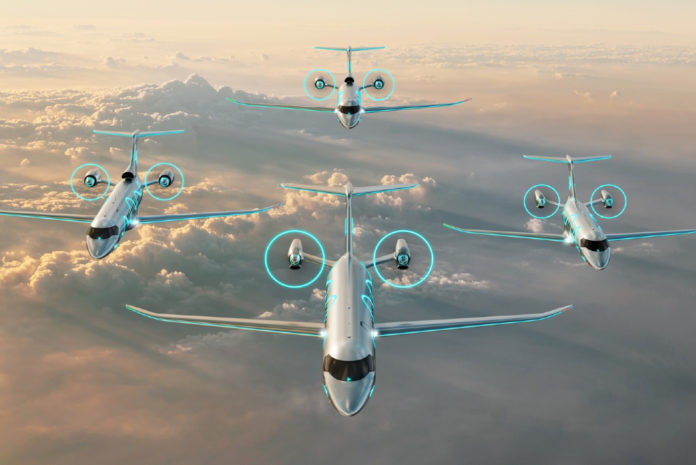The Embraer Energia line was revealed as part of the company’s progress report
Including hybrid-electric regional aircrafts with 19 and 30 seats, the Embraer Energia line of four new future aircrafts have been showcased. A number of environmental projects that will potentially advance aviation were also announced by Airbus.
A year ago, the Embraer Energia line program was announced as a step toward the goal of having net-zero emissions by the year 2050. These strategies are both technically feasible and financially viable as they are informed by the company’s 50 years of technical experience, external input from airlines, and cooperative research with engine OEMs.
“We have set bold but realistic goals for these concepts to come to market,” said President and CEO of Embraer Commercial Aviation Arjan Meijer during the Embraer Energia line webinar. “Since we announced our Energia concepts last year, we’ve been busy evaluating different architectures and propulsion systems. Smaller aircraft platforms will be produced first because we can apply these new technologies faster than on the larger aircraft.”

Embraer wants to make sure that the aircrafts can fly at 30,000 feet in conditions of -76 degrees Fahrenheit (-60 degrees Celsius) in addition to utilizing modern technologies. Aircrafts powered by hydrogen are anticipated to enter service by 2035, while hybrid-electric aircrafts are expected to debut in the early 2030s.
Last week, Airbus also unveiled a number of sustainability initiatives, including a collaboration with Neste, a producer of sustainable aviation fuel (SAF), to promote SAF production and availability throughout the aerospace sector. The French company also confirmed a partnership with the Renault Group to “mature technologies associated with future hybrid-electric aircraft.” Airbus also showcased a fuel cell engine that runs on hydrogen and will start conducting flight testing in two years.
“We are focused on developing this technology to understand if it is feasible for a 2035 entry-into-service of a zero-emission aircraft,” said Vice President of Zero-Emission Aircraft, Airbus, Glenn Llewellyn. “If the technology targets were achieved, fuel cell engines may be able to power a 100-passenger aircraft with a range of approximately 1,000 nautical miles.”
